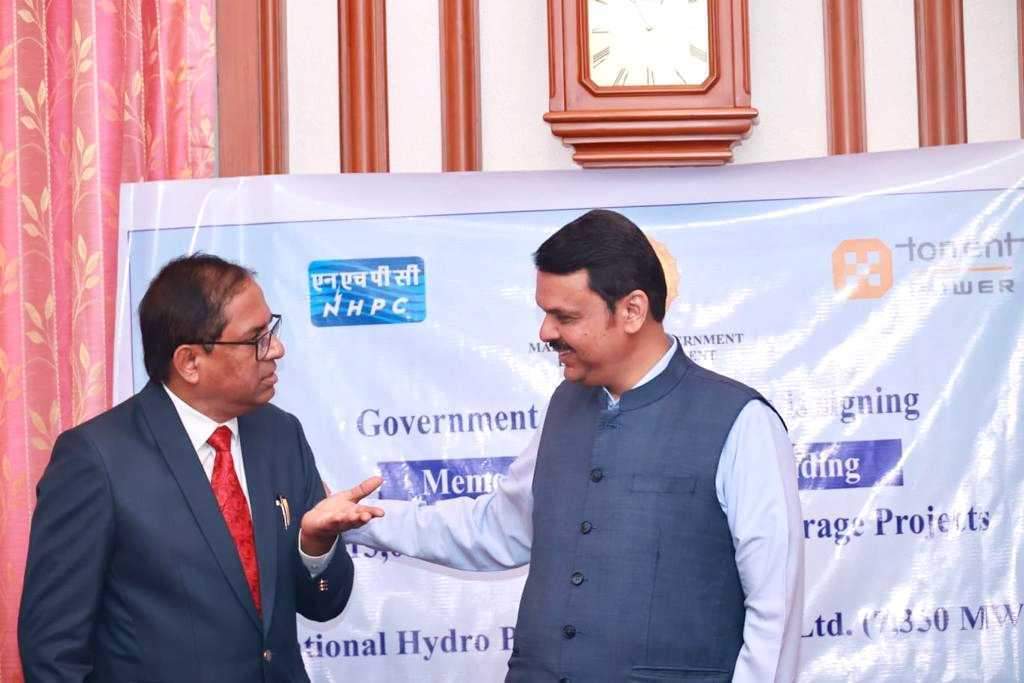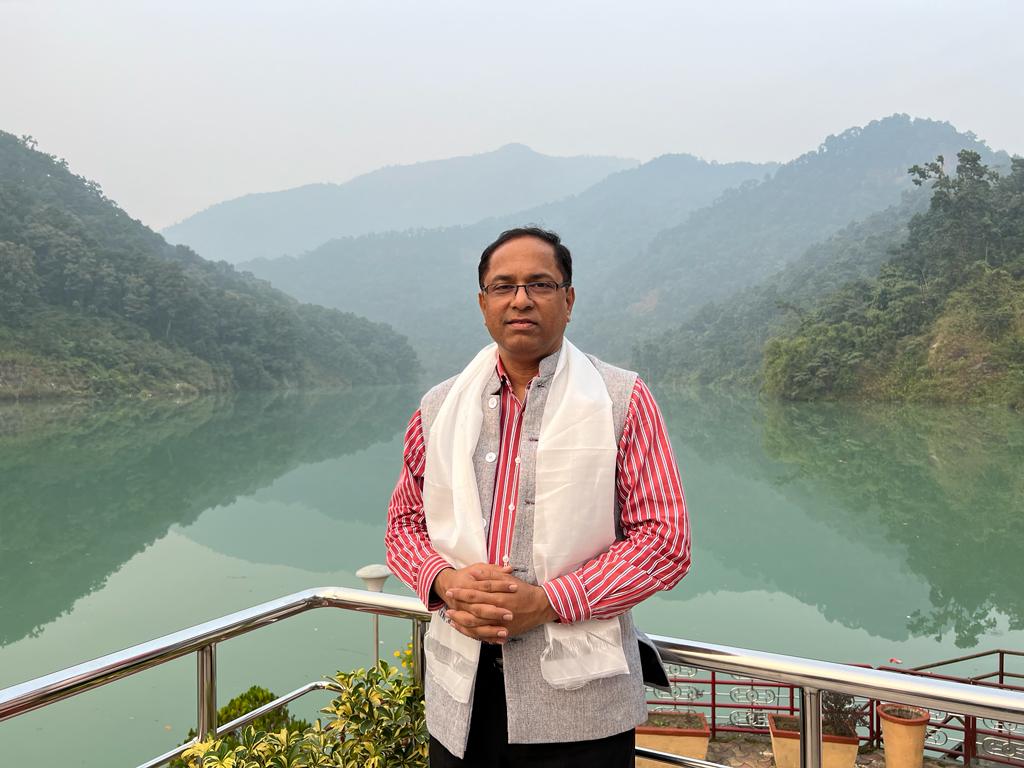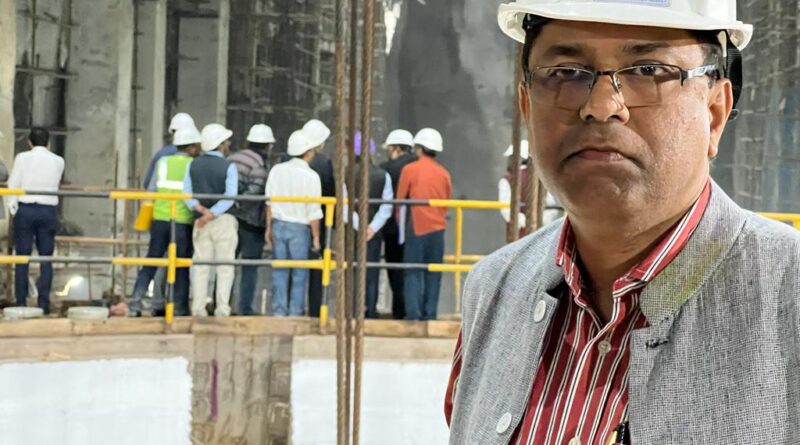‘Power’ing personality : Dr Nirgudkar
Thane’s Dr Uday Nirgudkar added another beautiful feather to his already decked-up hat when appointed as an Additional and Independent Director on the Board of NHPC (National Hydroelectric Power Corporation) Limited on November 15, 2021. With an MBA and a PhD in Marketing Management, Dr Nirgudkar has over three decades of experience in various sectors like Information Technology (IT), Education, Infrastructure, Finance, Media and Economics. He has been in top positions in IT firms of international repute, conducting workshops in African and Middle East countries on Management Skills. He has also written features on Technology and Education in various newspapers and magazines, anchored daily debate shows on current affairs, and interviewed dignitaries from multiple fields. Dr Nirgudkar’s contributions in diverse areas over the years have been impeccable, and there is seldom any doubt that his latest involvement with NHPC will be a great value add.

Talking about NHPC and its inception, Dr Nirgudkar avers, “NHPC is an Indian public sector hydropower company that was incorporated on November 7, 1975. It aims to plan, promote and organise an integrated and efficient development of hydroelectric power. It is also the largest hydropower development organisation in India, with the capabilities to undertake all the activities from conceptualisation to commissioning of hydro projects. Having tasted success in hydropower generation, NHPC has expanded to include other energy sources like solar, geothermal, tidal, and wind in its armoury.”
Though Dr Nirgudkar worked across different domains in his illustrious professional career, the energy industry was new to him. He jokingly says, “Before joining NHPC, the only thing I knew about electricity was that it is generated by switching on a button.”
However, the last 18 months of his career have been a revelation as he equipped himself with tremendous knowledge. Dr Nirgudkar states, “After going through the history of NHPC, I realised that we could not continue with what worked in the past. We needed to adapt according to the present scenario and future possibilities. To begin with, I acquainted myself with the industry by reviewing all the hydroelectric power companies that have existed since 1970. After this exercise, I zeroed down on the areas we as a company had to work on.” As a pleasant surprise, the amount of electricity that NHPC generated in the 45 years (1975-2020) was equal to that since Dr Nirgudkar became a part of the company.

He shares about one of the NHPC’s projects, “Project Parvati” – “This project is based in one of the remotest areas of India, which is around 35 km by road from Manali, another 9-10km walk through a forest, and another one and a half hours by train. Reaching the location is a Herculean task. However, with internet connectivity and high-end visuals generated by the camera, we get the data, which Russia first receives and eventually sends to us. We use this data to communicate with the workers there.” Besides Project Parvati, another 30 projects are going on in the north and northeast, with an additional 12 in the pipeline. It is known that 57% of India’s energy requirement is met through fossil fuels, and NHPC aims to bring this down to 0% by 2070. Dr Nirgudkar explains, “Fossil fuels are not the way forward. Solar energy is another option, but it is not viable. Though it is cheap to generate, the storage cost is high. Hydroelectric power, on the other hand, ticks all boxes.” At NHPC, solar pumps transport the water from the upper water body to the lower water body and the force at which the water comes down is used to generate hydroelectric power. The company aims to introduce pump storage and double its capacity in the coming years.
Conserving rivers and other water bodies is paramount for generating hydroelectricity. However, some countries compromise their water reserves in the quest for development. Dr Nirgudkar recalls, “During one of my visits to Turkistan, I came across a dilapidated boat floating on a water body. Upon enquiring, I found out that there was a textile mill developed at the coast of this water body, and the mill had used up the water from this water body to such an extent that the things that had sunk began to show their face.” Development is the goal of every country, but compromising the ecological balance is not the right way to do it.

NHPC has been diligent in all its operations. Before finalising a site for hydropower generation, satellite images and groundwater levels are studied to understand the geology. Rainfall for the last 100 years is also examined. Whether it was generating hydropower from the Kishanganga river that comes into India from Pakistan (known as the Neelum river) or providing solace to the people of Kargil who had not seen electricity for 18 years, NHPC has left no stone unturned in delivering the best. In the process, NHPC also creates a healthy ecosystem for those living in the said areas. For instance, schools, toilets, etc., are built, and cultural programmes are organised to keep the people happy. Dr Nirgudkar mentions, “Taking the people into confidence before starting a hydroelectric power project is important. Therefore, we earn the people’s trust through social initiatives and cultural outreach programmes.”
In the coming days, the Subanisiri dam will be inaugurated by Prime Minister Shri Narendra Modi. This dam is built on a river which comes from China. While it caused floods in Assam and Bihar before the dam’s construction, the river’s water flow is now used to generate 2200 MW of energy.
The future of hydropower in India looks bright as it is in the safe hands of NHPC, which has registered a year-on-year growth of 9% recently, and signed MOUs worth ₹71000 crores. Dr Nirgudkar posits, “We have started assisting Nepal and Bhutan in hydropower generation, which is helping strengthen international relations.”

